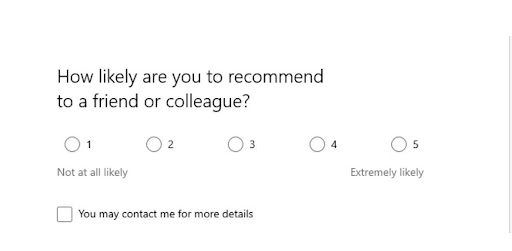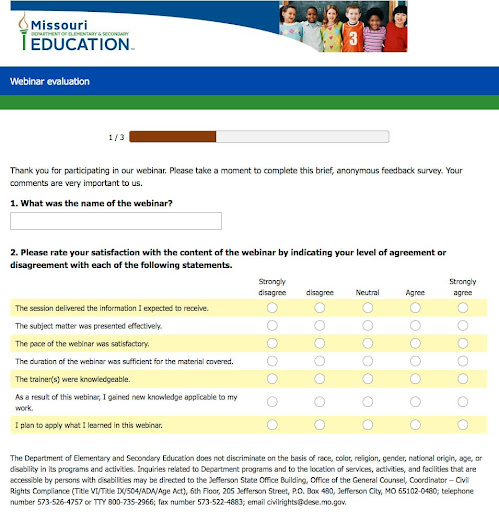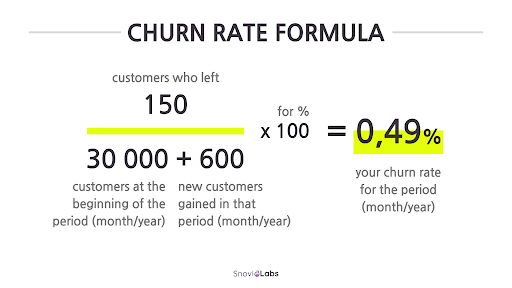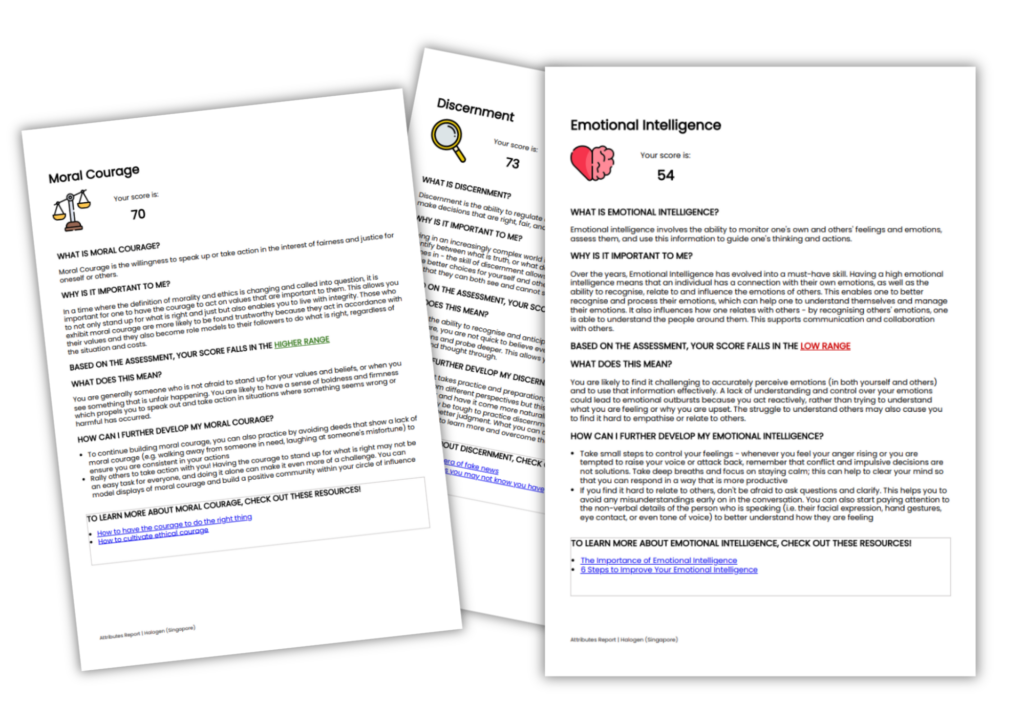A business is nothing without its customers. So much so that customer satisfaction is a key determinant of success. How you measure and collect customer satisfaction data can have a huge impact on your strategies as a company, whether you need to focus on finding new product ideas, inventory control or virtual training techniques.
Using customer satisfaction metrics to improve and develop your company can boost profits, whereas neglecting them can lead to oversights of easily rectified issues. Whether you’ve just started as a business or have been in the game for a while, it’s worth looking over the customer satisfaction metrics you’re using and making sure they include these six:
1. Net promoter score (NPS)
Essentially, NPS is how willing your customers are to promote you to others. Through a post-purchase NPS survey, sent as emails, texts, or through a chatbot service, customers can rate how likely they are to recommend your business on a scale from 1-10.
From the results, you can see which customers are your promoters, passives, and detractors.
- Promoters usually score you nine or 10 and will actively tell their friends and family about your business. These customers are your biggest marketing resource and can bring in lots of new business.
- Passives will rate you as a seven or eight – they probably won’t discourage people from your brand but are unlikely to openly recommend you either.
- Detractors are those who score you a six or lower. They’re neither loyal to your brand nor interested in promoting it. They might even have bad things to say about you.
You can calculate your business’ NPS by taking the percentage of detractors from the percentage of promoters. This will help you anticipate churn and quantify loyalty at various points throughout the customer experience so you can work on improving this.

For example, a learning solutions specialist for a top Australian business was able to improve their NPS score by utilizing a gamification strategy for online training. Learning effectiveness increased and service users rated the experience higher.

2. Customer satisfaction score (CSAT)
CSAT metrics are a vital tool for measuring customer satisfaction and improving your service or product. CSAT asks your customers to score their satisfaction with your service or product. Different CSAT surveys have different ranges, with some including emoji options or scales of ‘very dissatisfied’ to ‘very satisfied’. The most common rating scales have one to 10 or one to five options. Higher numbers are better, showing more satisfied customers.
To get your CSAT percentage, you must divide the number of satisfied customers by the total number of customers and multiply by 100. For example, out of 1500 customers, 960 of them rate themselves satisfied or very satisfied. Your calculation would look something like this:
960/1500 = 0.64
0.64 x 100 = 64 percent satisfied customers
The more considered your CSAT survey questions, the more valuable the customer satisfaction metrics will be. Specific questions at key points in the customer experience, such as immediately after an interaction, can improve your survey response rate and build an honest and accurate picture.
Say you’re running a continuing education course on change management. You can send a quick CSAT survey to participants after every learning module. Knowing what attendees liked and didn’t like will help you prep material for the next course.

From choosing between inventory management softwares to the content of your marketing strategy, knowing how your customers feel about your business is essential.
3. Customer service satisfaction (CSS)
Similar to the CSAT, CSS rates the satisfaction of customers – but specifically concerning customer service. This information is usually gathered after an interaction with customer services. Again, there are many methods of collecting this data, including surveys, different types of emails, pop-ups, or live chats.

Unambiguous questions make it easy for customers to identify the issues they experienced with customer service. This could be by asking for the names of representatives they interacted with, the date of their interaction, and the type of assistance they required. This clearly shows where your customer service can improve, as well as what issues customers face time and again. Some examples of unambiguous questions could be:
- Should we include a chatbot on our website?
- Which customer support channel helped address your concern the fastest?
- Was this customer service popup useful?
- Are you satisfied with our checkout process? Why or why not?
When designing your survey, remember layout and design can sway a customer to complete it. A simple design with straightforward questions looks more approachable, as they may not want to spend too much time thinking about in-depth answers. Having standard questions will make task management easier too, enabling you to track patterns over time.
4. Churn rate
We all know it’s beneficial to have loyal customers that keep coming back. Increasing customer retention by even five percent can increase profits by 25 percent. With this in mind, knowing your business’s churn rate can shed light on customer retention, helping to minimize loss.
To measure your churn rate, take the number of customers at the end of the month from the number of customers at the start. Divide that by the number of customers from the beginning of the month. For example, you started the month with 100 customers and ended it with 85.
The calculation would look something like this:
100 – 85 = 15
15/100 = 0.15
That makes a monthly churn rate of 15 percent.
These statistics show when your churn is highest by month, allowing you to compare your progress over time. This acts as a prompt to your business to understand why customers leave and how you can prevent this, thus reducing churn.
This can be through further questionnaires, in collaboration with other customer satisfaction metrics and customer feedback, or by using app stickiness and other methods to make customers more likely to return again. If you run professional training courses, consider segmentation and personalization for a unique experience that shows users they’re more than just a number.

5. Customer effort score (CES)
When experiencing your service, customers don’t want to put in all the legwork. A customer effort score can tell you how much effort it takes your customers to find information, sign up for a course, or interact with your business. Unsurprisingly, of customers who rate their experience as high effort, only four percent intend to repurchase.
Through surveys, you can measure the effort required to interact with your brand and spotlight difficult areas of service. Questions such as “how easy was it for you to find the services you were looking for today?” or “how difficult was it to use our return process?” can create a clear image of customer interactions and the ease of completing them.

When installing new procedures or systems, you can use this to monitor their success in aiding customers. While these might seem great on the business side, ultimately, it will come down to how easy they make the customer experience.
CES can give the whole company feedback on this, as those in the back office vs front office may not be so aware of customer responses. Collecting CES can help to observe and swiftly address customer concerns regarding changes, especially in the context of back office support.
6. Customer reviews
Reviews of your business can make or break a potential customer’s decision to engage further with your brand, hence the surge in influencer marketing. Customer reviews give onlookers an insight into a personal experience with a brand or business and can be the affirmation – or warning – needed to influence their decision.
Consistent good reviews give your brand credibility and new customers confidence in your business before they engage directly with you. If you run a professional coaching business, positive user reviews will boost the social proof of your business, hopefully leading to more clients.
Negative reviews can be equally essential. How you handle them is a great example of how your business manages challenges and problems, so doing this well can be almost as beneficial as receiving a good review in the first place.
The more platforms that reviews of your business can be found on, the wider your reach and exposure will be, regardless of customer preferences regarding app, website, or device. Remember, customers will leave reviews across a variety of hardware, so ensure your forms match the style and appearance of computer, tablet, and mobile surveys.

Takeaways
Using a variety of customer satisfaction metrics together can shape your business and present new avenues to invest in to improve customer satisfaction. By tapping into this data, you can inform future company decisions, like how to structure new hire training for a fulfillment warehouse, what advisory services work well, and how effective your strategies are.
Customer satisfaction is essential for growing your business. If customers aren’t enjoying it, it’s not going to work. By keeping track of these six customer satisfaction metrics, you can continue to grow and develop your brand while looking out for your customers.





